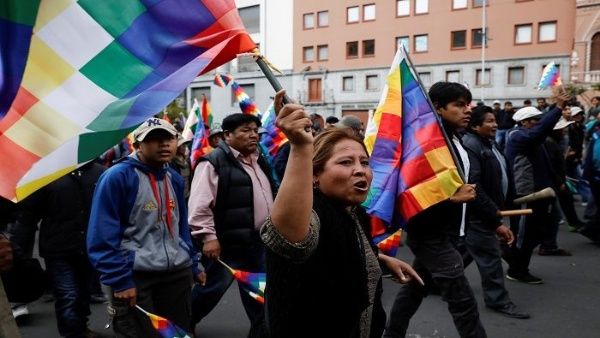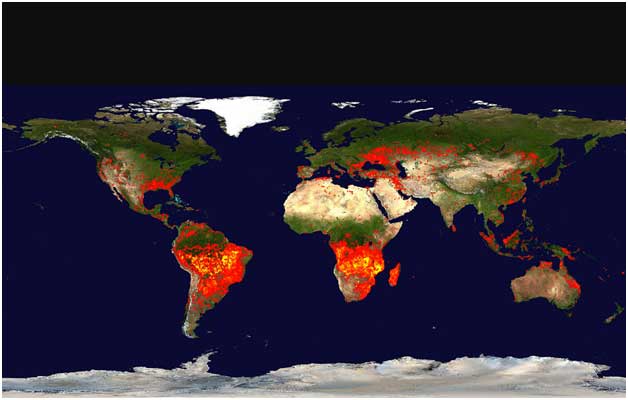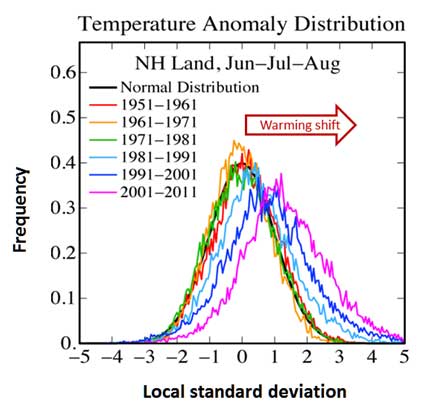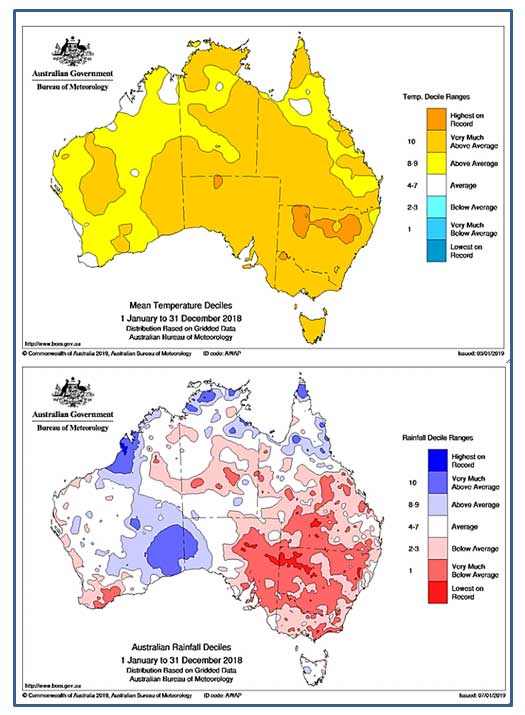Dear Friend,
Over the course of the past few years, Bolivia has struggled to raise investment to develop the lithium reserves in a way that brings the wealth back into the country for its people. Morales’ Vice President Álvaro García Linera had said that lithium is the “fuel that will feed the world.” Bolivia was unable to make deals with Western transnational firms; it decided to partner with Chinese firms. This made the Morales government vulnerable. It had walked into the new Cold War between the West and China. The coup against Morales cannot be understood without a glance at this clash.
Kindly support honest journalism to survive. https://countercurrents.org/subscription/
If you think the contents of this news letter are critical for the dignified living and survival of humanity and other species on earth, please forward it to your friends and spread the word. It's time for humanity to come together as one family! You can subscribe to our news letter here
http://www.countercurrents.org/news-letter/.
In Solidarity
Binu Mathew
Editor
Countercurrents.org
After Morales Ousted in Coup, the Lithium Question Looms Large in Bolivia
by Vijay Prashad
Over the course of the past few years, Bolivia has struggled to raise investment to develop the lithium reserves in a way that brings the wealth back into the country for its people. Morales’ Vice President Álvaro García Linera had said that lithium is the “fuel that will feed the world.” Bolivia was unable to make deals with Western transnational firms; it decided to partner with Chinese firms. This made the Morales government vulnerable. It had walked into the new Cold War between the West and China. The coup against Morales cannot be understood without a glance at this clash.

Bolivia’s President Evo Morales was overthrown in a military coup on November 10. He is now in Mexico. Before he left office, Morales had been involved in a long project to bring economic and social democracy to his long-exploited country. It is important to recall that Bolivia has suffered a series of coups, often conducted by the military and the oligarchy on behalf of transnational mining companies. Initially, these were tin firms, but tin is no longer the main target in Bolivia. The main target is its massive deposits of lithium, crucial for the electric car.
Over the past 13 years, Morales has tried to build a different relationship between his country and its resources. He has not wanted the resources to benefit the transnational mining firms, but rather to benefit his own population. Part of that promise was met as Bolivia’s poverty rate has declined, and as Bolivia’s population was able to improve its social indicators. Nationalization of resources combined with the use of its income to fund social development has played a role. The attitude of the Morales government toward the transnational firms produced a harsh response from them, many of them taking Bolivia to court.
Over the course of the past few years, Bolivia has struggled to raise investment to develop the lithium reserves in a way that brings the wealth back into the country for its people. Morales’ Vice President Álvaro García Linera had said that lithium is the “fuel that will feed the world.” Bolivia was unable to make deals with Western transnational firms; it decided to partner with Chinese firms. This made the Morales government vulnerable. It had walked into the new Cold War between the West and China. The coup against Morales cannot be understood without a glance at this clash.
Clash With the Transnational Firms
When Evo Morales and the Movement for Socialism took power in 2006, the government immediately sought to undo decades of theft by transnational mining firms. Morales’ government seized several of the mining operations of the most powerful firms, such as Glencore, Jindal Steel & Power, Anglo-Argentine Pan American Energy, and South American Silver (now TriMetals Mining). It sent a message that business as usual was not going to continue.
Nonetheless, these large firms continued their operations—based on older contracts—in some areas of the country. For example, the Canadian transnational firm South American Silver had created a company in 2003—before Morales came to power—to mine the Malku Khota for silver and indium (a rare earth metal used in flat-screen televisions). South American Silver then began to extend its reach into its concessions. The land that it claimed was inhabited by indigenous Bolivians, who argued that the company was destroying its sacred spaces as well as promoting an atmosphere of violence.
On August 1, 2012, the Morales government—by Supreme Decree no. 1308—annulled the contract with South American Silver (TriMetals Mining), which then sought international arbitration and compensation. Canada’s government of Justin Trudeau—as part of a broader push on behalf of Canadian mining companies in South America—put an immense amount of pressure on Bolivia. In August 2019, TriMetals struck a deal with the Bolivian government for $25.8 million, about a tenth of what it had earlier demanded as compensation.
Jindal Steel, an Indian transnational corporation, had an old contract to mine iron ore from Bolivia’s El Mutún, a contract that was put on hold by the Morales government in 2007. In July 2012, Jindal Steel terminated the contract and sought international arbitration and compensation for its investment. In 2014, it won $22.5 million from Bolivia in a ruling from Paris-based International Chamber of Commerce. For another case against Bolivia, Jindal Steel demanded $100 million in compensation.
The Morales government seized three facilities from the Swiss-based transnational mining firm Glencore; these included a tin and zinc mine as well as two smelters. The mine’s expropriation took place after Glencore’s subsidiary clashed violently with miners.
Most aggressively, Pan American sued the Bolivian government for $1.5 billion for the expropriation of the Anglo-Argentinian company’s stake in natural gas producer Chaco by the state. Bolivia settled for $357 million in 2014.
The scale of these payouts is enormous. It was estimated in 2014 that the public and private payments made for nationalization of these key sectors amounted to at least $1.9 billion (Bolivia’s GDP was at that time $28 billion).
In 2014, even the Financial Times agreed that Morales’ strategy was not entirely inappropriate. “Proof of the success of Morales’s economic model is that since coming to power he has tripled the size of the economy while ramping up record foreign reserves.”
Lithium
Bolivia’s key reserves are in lithium, which is essential for the electric car. Bolivia claims to have 70 percent of the world’s lithium reserves, mostly in the Salar de Uyuni salt flats. The complexity of the mining and processing has meant that Bolivia has not been able to develop the lithium industry on its own. It requires capital, and it requires expertise.
The salt flat is about 12,000 feet (3,600 meters) above sea level, and it receives high rainfall. This makes it difficult to use sun-based evaporation. Such simpler solutions are available to Chile’s Atacama Desert and in Argentina’s Hombre Muerto. More technical solutions are needed for Bolivia, which means that more investment is needed.
The nationalization policy of the Morales government and the geographical complexity of Salar de Uyuni chased away several transnational mining firms. Eramet (France), FMC (United States) and Posco (South Korea) could not make deals with Bolivia, so they now operate in Argentina.
Morales made it clear that any development of the lithium had to be done with Bolivia’s Comibol—its national mining company—and Yacimientos de Litio Bolivianos (YLB)—its national lithium company—as equal partners.
Last year, Germany’s ACI Systems agreed to a deal with Bolivia. After protests from residents in the Salar de Uyuni region, Morales canceled that deal on November 4, 2019.
Chinese firms—such as TBEA Group and China Machinery Engineering—made a deal with YLB. It was being said that China’s Tianqi Lithium Group, which operates in Argentina, was going to make a deal with YLB. Both Chinese investment and the Bolivian lithium company were experimenting with new ways to both mine the lithium and to share the profits of the lithium. The idea that there might be a new social compact for the lithium was unacceptable to the main transnational mining companies.
Tesla (United States) and Pure Energy Minerals (Canada) both showed great interest in having a direct stake in Bolivian lithium. But they could not make a deal that would take into consideration the parameters set by the Morales government. Morales himself was a direct impediment to the takeover of the lithium fields by the non-Chinese transnational firms. He had to go.
After the coup, Tesla’s stock rose astronomically.
This article was produced by Globetrotter, a project of the Independent Media Institute.
Our work is licensed under a Creative Commons Attribution-Share Alike 3.0 License. Feel free to republish and share widely.
Security forces violently clash with people as Evo Morales warns government not to stain with
blood
by Countercurrents Collective
Bolivia has flared up with violent clashes between people protesting the coup and security forces. Fresh clashes have broken out in as the self-declared interim president Jeanine Anez faced challenges to her leadership in the Bolivia Congress and the streets from supporters of the exiled President Evo Morales.
Growth continues to slow in major economies
by Nick Beams
Data from the world’s major economies, released over the past few days, show that the “synchronised” global slowdown pointed to by the International Monetary Fund is worsening.
Data from the world’s major economies, released over the past few days, show that the “synchronised” global slowdown pointed to by the International Monetary Fund is worsening.
In its report on the latest figures from China, the world’s second largest economy, Bloomberg said the “engines of China’s economy are spluttering with exports falling, factory output slowing, investment at a record low and consumption coming off the boil.”
The National Bureau of Statistics reported that value-added industrial output in October rose by 4.7 percent from a year earlier, down from a 5.8 percent increase in September and below the forecast of a 5.2 percent increase.
 Electronics factory in Zhuhai, China [Credit: http://www.flickr.com-people-76224602atN00]
Electronics factory in Zhuhai, China [Credit: http://www.flickr.com-people-76224602atN00]
Retail sales rose by 7.2 percent, down from a rise of 7.8 percent in September and below the 7.8 percent forecast.
The most significant figure was the fall in fixed investment growth. It slowed to 5.2 percent for the first ten months of the year, the lowest level in comparable data going back to 1998.
Speaking to reporters yesterday, Liu Aihua, a spokesperson for the statistics bureau, said: “There are many external uncertainties. Domestic cyclical issues have coincided with structural issues. Downward pressure on the economy has increased continuously. Risks and challenges we are facing cannot be underestimated.”
Julia Wang, an economist at HSBC, told Bloomberg the “momentum for slowdown” was not over and because it was “so sharp” it could impact on the labour market at some point next year.
Growth in Japan, the world’s third largest economy, slowed sharply in the third quarter as the government of Prime Minister Shinzo Abe considers the size of a stimulus package. Abe ordered the package last week but the size is yet to be decided.
Gross domestic product expanded at an annualized rate of just 0.2 percent in the September quarter, compared to a rate of 1.8 percent in the three months to June and below the expected increase of 0.9 percent. The Japanese economy has been adversely impacted by the US-China trade conflict, tensions with South Korea, sparked by a conflict over reparations to victims of forced labour during World War 2, and a recent typhoon.
Figures released yesterday show that Germany, the world’s fourth largest economy, and the driving force of the eurozone economy, only narrowly escaped a technical recession—defined as two consecutive quarters of negative growth.
The economy expanded by just 0.1 percent in the third quarter while the contraction for the second was revised down from minus 0.1 percent to minus 0.2 percent.
A research note by Claus Vistesen, the chief eurozone economist at Pantheon Macroeconomics, cited by the US business channel CNBC, said there was “no recession, but most definitely a very weak economy.”
He said in some sense this was the worst of both worlds. “Today’s data confirm that the German economy has now stalled, but the headlines are probably not dire enough to prompt an immediate and aggressive fiscal response from Berlin.”
German Economy Minister Peter Altmaier said while the figures showed Germany had avoided a technical recession in the third quarter, economic development in the region was fragile.
Speaking to CNBC, Daniela Schwarzer, director of the German Council on Foreign Relations, said there was “only a minor difference” between growth of 0.1 percent and a contraction of minus 0.1 percent.
“The truth of the matter is that Germany doesn’t have a robust growth perspective at the moment,” she said, pointing out that its export-dependent economy was being hit by the shift in international trade relations—a reference to the US-China trade war and the aggressive orientation of Washington towards the European Union.
Looking beyond the immediate situation, she continued: “The whole question is what will be the sources of future growth be for Germany and the challenge to actually structurally change the German economy is huge … There needs to be strong investment in education, research and innovation, and Germany needs infrastructure investment as well.”
One of the starkest expressions of the worsening situation in the global economy and its impact on the working class is contained in the latest economic data from the UK, the world’s fifth largest economy.
According to figures from the Office for National Statistics released on Monday, the UK economy grew by just 0.3 percent in the third quarter. While this was a recovery from the 0.2 percent contraction for the second quarter, growth over the year to September was just 1 percent—the lowest level since 2010.
A report by the Institute for Fiscal Studies pointed to the underlying worsening of the economic situation. It said that over the past 11 years productivity, as measured by output per hour worked, had grown “by just 2.9 percent. That is about as much as it grew on average every 15 months in the preceding 40 years.”
One of the consequences is lower wages, which are no higher in real terms than they were 11 years ago. According to a study by the Resolution Trust, “the past decade has been the worst for earnings growth since the Napoleonic Wars.”
The study punctured claims that the growth of employment numbers indicated economic health. It noted that a “deep recession in which wages fell dramatically followed by an unprecedentedly sluggish earnings recovery” meant household incomes dropped and more people sought employment.
Employment, it said, had increased particularly rapidly for women in their early 60s and those in the lowest income deciles. This was evidence that the increase in the lift in the pension age, combined with welfare cuts, had contributed to what it called the “labour supply shift” as working households tried to counter the wage squeeze and nonworking ones experienced an “income shock.”
In the United States, the world’s largest economy, where, in the midst of the rise of stock markets to record highs, President Trump claims to have “launched an economic boom the like of which we have never seen before,” economic growth was down to 1.9 percent for the third quarter and investment in the real economy is at its lowest level since 2015.
Data released yesterday showed that applications to collect unemployment benefits increased by 14,000 to 225,000 in the week to November 9, higher than all forecasts.
The economic slowdown, and in some cases outrights contraction, is extending beyond the major economies. The economies of Singapore and Hong Kong, heavily impacted by the trade war, are in recession.
The South Korean economy grew by 2 percent for the year to September, but this was the lowest level for a decade. The manufacturing sector, the mainstay of the Korean economy, lost 81,000 jobs last month, with the country’s finance minister, Hong Nam-ki, telling reporters that government stimulus efforts were having little effect.
“We have expected fiscal spending to play the supporting role in adding vitality to the private sector,” he said. “However it is not working well with limited spillover effects, making us worried.”
In Australia, where the central bank has cut its base interest rate three times this year, setting it at a record low of 0.75 percent in a bid to boost the economy, the Bureau of Statics reported yesterday that total employment fell by 19,000 in October, the biggest decline since August 2016.
The Morrison Liberal government claimed that its tax cuts introduced in July, following its narrow re-election in May, would lift household incomes and boost spending at local businesses. Nothing of the sort has happened.
With private sector wages rising by just 0.5 percent in the September quarter, retailers are expecting a dismal Christmas period, according to a report by the accounting and finance firm Deloitte.
It noted that retailers began the year with high expectations but this optimism had faded “with a combination of weak consumer spending, higher input prices and a subdued economy resulting in some of the toughest trading conditions in recent history.”
Originally published in WSWS.org
Tinderbox Earth
by Dr Andrew Glikson
The effects of encroaching deserts and of fire storms on terrestrial forests, originally
developed under moderate conditions distinct from those emerging under rapid global warming and extreme weather events, may have been underestimated. Average global temperatures do not tell the story — it is the increasingly frequent weather anomalies which do. Powerful psychological factors prevent many scientists from expressing their worst fears,a phenomenon dubbed as “scientific reticence”.




The effects of encroaching deserts andof fire storms onterrestrial forests, originally developed under moderate conditions distinct from those emerging under rapid global warming and extreme weather events, may have been underestimated. Average global temperatures do not tell the story — it is the increasingly frequent weather anomalies which do. Powerful psychological factors prevent many scientists from expressing their worst fears,a phenomenon dubbed as “scientific reticence”.
As the tropical climate zones expand toward the poles,moderate climate zones shift polar-ward and are contracting where they clash with polar-derived cold air and ice melt water flow through weakened jet stream boundaries. As climate zones are shifting at a rate of 56-111 km per decadeand ecosystems have only a short time to adapt, arid zones expand and draughts of fires consume the moderate-climate forests and formerly fertile habitats.Allen et al. (2012) suggest the increase in black carbon aerosols and tropospheric ozoneconstitute significant factors generating a polar-ward shift of moderate climate zones.
Global fire maps by NASA document the progression of wild fires since about 2000, including major fires in Siberia, northwest Europe, southern Europe, Russia, Southeast Asia, Australia, central and southern America, California and elsewhere (Fig. 1).Some of the global patterns that appear in the fire maps are the result of natural cycles of rainfall, dryness, and lightning. For example, naturally occurring fires are common in the boreal forests of Canada in the summer. In other parts of the world, the patterns are the result of human activity. For example, the intense burning in the heart of South America from August-October is a result of human-triggered fires, both intentional and accidental.

Fig. 1.The Moderate Resolution Imaging Spectro-radiometer (MODIS) on NASA’s Terra satellite showing fires around the world. Credit: NASA
Many scientists and the IPCC have underestimated the scale and rate of global warming and its consequences. With exceptions, the need for excessive caution and absolute certainty in science is often manifested in reticence from the mainstream science (‘Down to Earth’ 2019). However, the available evidence suggests that scientists have in fact been conservative in their projections of the impacts of climate change and at least some of the key attributes of global warming from increased atmospheric greenhouse gases have been under-predicted, particularly in IPCC assessments of the physical science by Working Group I.
By contrast, at a speed hardly anticipated about 20 years ago,wild fires have been spreading around the globe over large parts of the continents.
Nor do averageglobal land-ocean temperatures tell the whole story. It is the increasingly frequent anomalies which underlieextreme weather events (Fig. 2), including rapid Arctic melt, heat waves, fires, storms and cyclones, which underpin the fundamental shift in the state of the terrestrial climate.

Fig 2.Temperature anomaly distribution: The frequency of occurrence (vertical axis) of local temperature anomalies (relative to 1951-1980 mean) in units of local standard deviation (horizontal axis). Area under each curve is unity. Image credit: NASA/GISS.
It has been stated “What happens in the Arctic does not stay in the Arctic”.Temperatures in the Arctic have reached34oC in July 2019, affecting melting over700,000 km2 in Greenland late May 2019. The weakening of the circum-Arctic jet stream ensues in its undulation and intersection by warm air masses moving north and by cold air masses moving south, along with ice melt from the Greenland ice sheet forming cold regions in the North Atlantic Ocean.
According to the Australian Climate Council climate change has contributed to a southward shift in weather systems that typically bring cool season rainfall to southern Australia. As the cold humid spirals of the Antarctic vortex (Fig. 3) recede to the south, since the 1970s late autumn and early winter rainfall has decreased by 15 percent in southeast Australia, and Western Australia’s southwest region. Current drought conditions come after a 2016/2017 and 2018 summer characterized by record breaking temperatures, followed by a record dry winter. Rainfall over southern Australia during autumn 2018 was the second lowest on record (Fig. 4). The drought has reached extreme level, accompanied by wild fires.Australia, like other parts of the world, is paying the price of climate change in terms of growing damage to its agriculture, communities and way of life.

Fig. 3. Weather systems driven by the strong westerly winds of the Antarctic polar vortex curl over the southern continents (NASA, Galileo)

Fig. 4.Australia: Current effects of global warming.A. 2018 annual mean temperatures compared to historical temperature observations.B. 2018 annual rainfall compared to historical rainfall observations
The global rise rate in CO2 has reached 2 to 3 ppm/year, the fastest rate since 66 million years ago, and a level of CO2-equivalent (a value including the radiative forcing of methane and nitrous oxide) near-500 ppm. According to the IMF in (2017), the world is subsidizing fossil fuels by $5.2 trillion, equal to roughly 6.5 percent of global GDP. By contrast the loss of wealth due to reduced agricultural productivity due to climate change is projected to exceed $19 billion by 2030, $211 billion by 2050 and a pprojected$4 trillion by 2100.
As stated by Hansen et al. (2012) “Burning all fossil fuels would create a different planet than the one that humanity knows. The palaeoclimate record and ongoing climate change make it clear that the climate system would be pushed beyond tipping points, setting in motion irreversible changes, including ice sheet disintegration with a continually adjusting shoreline, extermination of a substantial fraction of species on the planet, and increasingly devastating regional climate extremes”.
Andrew Glikson is an Earth and climate scientist
What the U.S. Military Will Be Doing in a Climate Crisis Future
by Michael T Klare
There will come a time when a presidential visit to the Situation Room involves not a nuclear crisis or the next major terrorist attack, but rather a conjunction of severe climate events, threatening the very heartbeat of the nation.
Was the Founder of White Helmets Killed by Islamic State?
by Nauman Sadiq
The founder of the White Helmets, James Le Mesurier, was found dead on November 11 in suspicious circumstances after falling off a two-story apartment building in downtown Istanbul. He was a former British army veteran and a private security contractor from 2008 to 2012 working for Good Harbor, run by Richard Clarke, the former Bush administration counter-terrorism czar.

The founder of the White Helmets, James Le Mesurier, was found dead on November 11 in suspicious circumstances after falling off a two-story apartment building in downtown Istanbul. He was a former British army veteran and a private security contractor from 2008 to 2012 working for Good Harbor [1], run by Richard Clarke, the former Bush administration counter-terrorism czar.
Much like Erik Prince of the Blackwater fame, Le Mesurier’s work included training several thousand mercenaries for the United Arab Emirates (UAE) oil and gas field protection force, and designing security infrastructure for the police state of Abu Dhabi.
Although the police in Istanbul are treating the incident as suicide, it’s obvious that a person of his background and training would never attempt suicide by jumping off a two-story building. Because such a fall might have fractured a few bones but it was highly unlikely to cause death.
The assassination of James Le Mesurier should be viewed in the backdrop of the killing of the Islamic State’s chief Abu Bakr al-Baghdadi on October 27 in a US special-ops raid. It’s important to note in the news coverage of the killing of al-Baghdadi that although the mainstream media has been trumpeting for the last several years that the Islamic State’s fugitive leader was hiding somewhere on the Iraq-Syria border in the east, he was found hiding in the northwestern Idlib governorate, under the control of Turkey’s militant proxies and al-Nusra Front, and was killed while trying to flee to Turkey in Barisha village five kilometers from the border.
The reason why the mainstream media scrupulously avoided mentioning Idlib as al-Baghdadi’s most likely hideout in Syria was to cover up the collusion between the militant proxies of Turkey and the jihadists of al-Nusra Front and the Islamic State. Unsurprisingly, the White Helmets area of operations is also Idlib governorate in Syria where they are allowed to conduct purported “rescue operations” and “humanitarian work” under the tutelage of al-Nusra Front.
In fact, the corporate media takes the issue of Islamic jihadists “commingling” with Turkey-backed “moderate rebels” in Idlib so seriously – which could give the Syrian government the pretext to mount an offensive in northwest Syria – that the New York Times cooked up an exclusive report [2] a couple of days after the special-ops night raid, on October 30, that the Islamic State paid money to al-Nusra Front for hosting al-Baghdadi in Idlib.
The morning after the night raid, the Syrian Observatory for Human Rights reported [3] on Sunday, October 27, that a squadron of eight helicopters accompanied by warplanes belonging to the international coalition had attacked positions of Hurras al-Din, an al-Qaeda-affiliated group, in Idlib province where the Islamic State chief was believed to be hiding.
Despite detailing the operational minutiae of the special-ops raid, the mainstream news coverage of the raid deliberately elided over the crucial piece of information that the compound in Barisha village five kilometers from Turkish border where al-Baghdadi was killed belonged to Hurras al-Din, an elusive terrorist outfit which has previously been targeted several times in the US airstrikes.
Although Hurras al-Din is generally assumed to be an al-Qaeda affiliate, it is in fact the regrouping of the Islamic State jihadists under a different name in northwestern Idlib governorate after the latter terrorist organization was routed from Mosul and Anbar in Iraq and Raqqa and Deir al-Zor in Syria and was hard pressed by the US-led coalition’s airstrikes in eastern Syria.
According to “official version” [4] of Washington’s story regarding the killing of al-Baghdadi, the choppers took off from an American airbase in Erbil, the capital of Iraqi Kurdistan, flew hundreds of miles over the enemy territory in the airspace controlled by the Syrian and Russian air forces, killed the self-proclaimed “caliph” of the Islamic State in a Hollywood-style special-ops raid, and took the same route back to Erbil along with the dead body of the “caliph” and his belongings.
Although Washington has conducted several airstrikes in Syria’s Idlib in the past, those were carried out by fixed-wing aircraft that fly at high altitudes, and the aircraft took off from American airbases in Turkey, which is just across the border from Syria’s northwestern Idlib province. Why would Washington take the risk of flying its troops at low altitudes in helicopters over the hostile territory controlled by myriads of Syria’s heavily armed militant outfits?
In fact, several Turkish journalists, including Rajip Soylu, the Turkey correspondent for the Middle East Eye, tweeted [5] on the night of the special-ops raid that the choppers took off from the American airbase in Turkey’s Incirlik.
As for al-Baghdadi, who was “hiding” with the blessing of Turkey, it now appears that he was the bargaining chip in the negotiations between Trump and Erdogan, and the quid for the US president’s agreeing to pull out of Syria was the pro quo that Erdogan would hand Baghdadi to him on a silver platter.
It’s worth noting that although Idlib governorate in Syria’s northwest has firmly been under the control of Hayat Tahrir al-Sham (HTS) led by al-Nusra Front since 2015, its territory was equally divided between Turkey-backed rebels and al-Nusra Front.
In a brazen offensive in January, however, al-Nusra Front’s jihadists completely routed Turkey-backed militants, even though the latter were supported by a professionally trained and highly organized military of a NATO member, Turkey. And al-Nusra Front now reportedly controls more than 70% territory in the Idlib governorate.
The reason why al-Nusra Front has been easily able to defeat Turkey-backed militants appears to be that the ranks of al-Nusra Front have now been swelled by highly motivated and battle-hardened jihadist deserters from the Islamic State after the fall of the latter’s “caliphate” in Mosul in Iraq and Raqqa in Syria.
In all likelihood, some of the Islamic State’s jihadists who joined the battle in Idlib in January were part of the same contingent of thousands of Islamic State militants that fled Raqqa in October 2017 under a deal brokered [6] by the US-backed Syrian Democratic Forces (SDF).
The merger of al-Nusra Front and Islamic State in Idlib doesn’t come as a surprise, though, since the Islamic State and al-Nusra Front used to be a single organization before a split occurred between the two militant groups in April 2013 over a leadership dispute. In fact, al-Nusra Front’s chief Abu Mohammad al-Jolani was reportedly appointed [7] the emir of al-Nusra Front by Abu Bakr al Baghdadi, the leader of Islamic State, in January 2012.
Finally, regarding the assassination of the founder of the White Helmets, James Le Mesurier, in downtown Istanbul, it’s worth pointing out that Turkey has been hosting 3.6 million Syrian refugees and myriad factions of Ankara-backed militant proxies. It’s quite easy for the jihadists of al-Nusra Front and the Islamic State to intermingle with Syrian refugees and militants in the Turkish refugee camps.
Evidently, one of the members of the White Helmets operating in al-Nusra’s territory in Syria’s Idlib betrayed his patrons for the sake of getting a reward, and conveyed crucial piece of information to Le Mesurier who then transmitted it to the British and American intelligence leading to the October 27 special-ops raid killing al-Baghdadi. In all likelihood, the assassination of the founder of the White Helmets was the Islamic State’s revenge for betraying its slain chief.
Footnotes:
[1] The most dangerous job in the World: Syria’s Elite Rescue Force:
[2] ISIS Leader Paid Rival for Protection but Was Betrayed by His Own:
[3] Islamic State leader Abu Bakr al-Baghdadi killed in US raid:
[4] Official story of the night raid killing al-Baghdadi:
[5] Trump Confirms ISIS Leader Al-Baghdadi Killed In US Raid:
[6] Raqqa’s dirty secret: the deal that let Islamic State jihadists escape Raqqa:
[7] Al-Jolani was appointed as the emir of al-Nusra Front by al-Baghdadi:
Nauman Sadiq is an Islamabad-based attorney, columnist and geopolitical analyst focused on the politics of Af-Pak and Middle East regions, neocolonialism and petro-imperialism.
What is your religion? Life In Occupied Palestine!
by Tom Suarez
Israeli soldiers’ demand to know one’s religion, begs two larger questions: What does it mean to “be” a certain religion? And for what purpose is the question being asked?
Why aren’t Americans rising up like the people of Chile and Lebanon?
Co-Written by Medea Benjamin and Nicolas J S Davies
The waves of protests breaking out in country after
country around the world beg the question: Why aren’t Americans rising up in peaceful protest like our neighbors?
Impeachment: What Is At Risk
by David Sparenberg
Today, as the public phase of impeachment hearings are underway, I am watching while reading from the Life of Frederick Douglass. Sadly, I admit to not trusting the American people as much as I might to see clearly, think honestly, and do what is right. I would welcome being mistaken in my skepticism.
No comments:
Post a Comment